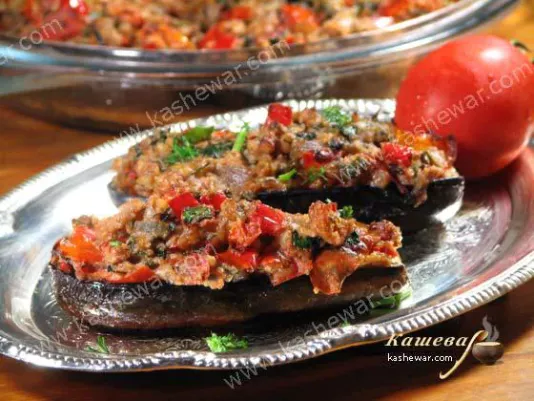Shekerpare Cake
Shekerpare cake is a recipe for Turkish sweets that is often prepared for holidays.

Turkish cuisine emerged at the crossroads of cultures and influences – from Persian and Arab to Mediterranean and Caucasian. It is the heir to Ottoman cuisine, one of the most refined imperial culinary traditions in the world. Turkish dishes impress with their depth of flavor and ease of preparation – a cuisine where fresh meat blends harmoniously with spices, vegetables, and legumes. Each region in Turkey has its own gastronomic identity, yet they all share a common philosophy: cook with quality ingredients and heart. This is what makes Turkish cuisine unique and approachable even for those just beginning to explore its flavors.
In Turkish culinary tradition, recipes are passed down from generation to generation, preserving authenticity while continuously evolving. Dishes are often built around a key ingredient – such as beef, lamb, eggplant, or chickpeas – and enhanced with signature spices like cumin, mint, and paprika. Turkish soups, such as mercimek çorbası made with red lentils, use simple ingredients but offer rich, layered flavor thanks to precise technique. Main courses like kebabs, köfte, and dolma center around meat and vegetables. Each region offers its own preparation styles, highlighting the richness of the national cuisine. Desserts – from baklava to aşure – have become symbols of Turkey’s sweet culinary heritage.
Kebabs hold a special place in Turkish cooking, representing not just a way to prepare meat but also the culture of shared meals. There are dozens of varieties: Adana kebab – spicy minced lamb skewered and grilled; şiş kebab – chunks of meat roasted over coals; İskender kebab – tender veal served with tomato sauce over flatbread and yogurt. Different regions use unique spices and techniques, but all kebabs share key elements – attention to meat quality, spice balance, and presentation culture. Turkish kebabs are more than food – they are a full culinary experience.
Turkish bread is not a side – it's an essential part of every meal. The most popular types are pide, simit, and ekmek. Pide is a soft boat-shaped flatbread, sometimes with fillings like meat, cheese, or egg. Simit is a crunchy sesame-crusted ring eaten at breakfast or throughout the day. Ekmek is plain white bread served with almost any dish. Turkish cuisine also features a wide variety of pastries: börek made from phyllo dough with cheese or meat, gözleme – pan-fried stuffed flatbreads. Baked goods are a daily tradition in Turkey, symbolizing hospitality and homely comfort.
Desserts have a central role in Turkish gastronomy. The most famous is baklava – dozens of layers of phyllo dough with nuts, soaked in syrup. Other popular sweets include lokum (Turkish delight) and aşure (a pudding made with grains, legumes, dried fruits, and spices). These dishes carry deep symbolic meaning and are often tied to religious holidays and rituals. Turkish sweets use natural ingredients such as honey, pistachios, rose water, and cinnamon. They are not only delicious but deeply rooted in the nation’s culture and traditions, making every meal feel like a celebration.
Turkish cuisine is closely tied to the rhythm of nature. In summer, lighter fare prevails: vegetable meze, cold soups, and yogurt-based sauces. In winter, people enjoy hearty soups, legume stews, and dishes with meat and wheat. Spring brings an abundance of greens, salads, and young vegetables, while autumn highlights eggplant, pumpkin, and quince. Seasonality is one of Turkish cuisine’s key virtues – dishes are not only made from fresh ingredients but prepared when those ingredients are at their peak. This approach preserves both taste and nutrition and shapes the country’s yearly culinary rhythm.